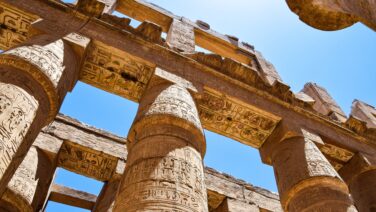
Egypt’s Kom Ombo Temple, Home to Two Rival Gods

Kom Ombo temple has an innovative style. It has two parallel axial passages that run through its columned halls and end in two sanctuaries, one for each of the two gods to whom it is dedicated. Sobek’s southern axis is on the right, and Harwer’s northern axis is on the left. The Kom Ombo Temple is situated on the Nile river Bank in Kom Ombo Town, which is about 168 kilometres south of Luxor and 47 kilometres north of Aswan. The name Kom Ombo is derived from the Arabic words “kum” (mound), which is used in the names of many archaeological locations, and “Ombo,” which ultimately comes from the ancient Egyptian word “Nubt,” which is translated as “the golden (city)”.The Kom Ombo Temple, which is situated between Edfu and Aswan on the riverbank, is a major draw for tourists exploring the Aswan itinerary and a great place to stop during Nile cruises.
You can experience the atmosphere of this rich history for yourself by strolling through the temple’s colonnades while seeing scenes of pharaonic propaganda.
Find out how to organise your Kom Ombo tour package with our guide to discovering Kom Ombo Temple.
Complex of the Kom Ombo temple Imagination

The Kom Ombo Temple is distinctive due to its “double” design, which had identical courts, halls, sanctuaries, and apartments for two different sets of gods. The crocodile god Sobek, who with with Hathor and Khonsu created the universe, was given honour in the temple’s southern section. whereas this was occurring, the northern section of the temple was devoted to the falcon god Haroeris (also known as “Horus the Elder”), who was best known as the deity of kingship, healing, protection, the sun, and the sky. Kom Ombo temple is unusual because everything is symmetrical in every way around the central axis.
The Imperial Entrance of Kom Ombo Temple

The Kom Ombo temple Imperial Entrance once had two entrances, but the left side has totally vanished, leaving just the lowest portions of the right wing and the centre pillar standing.
The gods Sobek, Hathor, and Khons, a 52-line hieroglyphic writing, and a relief of the Roman Emperor Domitian wearing the crowns of Upper Egypt may all be seen on the front wall to the right as you approach.
The Kom Ombo Temple's Sobek and Haroeris Courtyard
The Courtyard in Kom Ombo Temple was once enclosed by colonnades on three sides, but currently only the bottom halves of the 16 columns are still present.
The reliefs here, which show Tiberius presenting sacrifices, are notable for the vibrancy of their coloration. A square altar base sits in the courtyard’s middle, and stone screens line the far side.
The reliefs on the right-hand stone screen show crocodile-headed Sobek standing to the left as falcon-headed Horus and ibis-headed Thoth pour consecration water over Neos Dionysos (Ptolemy XII).
Getting inside the Inner Temple and the Hypostyle Hall

The 10 columns of the vestibule are lavishly ornamented with palm capitals, and reliefs are used to adorn the walls and columns. Check out the paintings of soaring vultures on the ceiling above the two major aisles.
From the vestibule, two doors lead into the Hypostyle Hall of Kom Ombo Temple, which has ten papyrus columns with flowery capitals supporting the roof.
Euergetes is pictured making offerings to several gods on the column shafts, and wall reliefs show him interacting with the gods.
The Ombos sacred crocodile is situated between the vestibule’s doors. Philometor, Euergetes II’s elder brother, is depicted in reliefs presenting a sacrifice to the falcon-headed Haroeris between the doorways leading into Kom Ombo Temple’s back portion.
The Antechambers and the Sanctuary of Kom Ombo

A sequence of three Antechambers will be entered after you have passed through the two Hypostyle Halls of Kom Ombo Temple. The two inner Sanctuaries will finally be reached through them.
The Haroeris sanctuary is on the left, and the Sobek sanctuary is on the right.
Ten smaller cult chapels encircle the sanctuary.
Inner Passageway and Outer Passageway
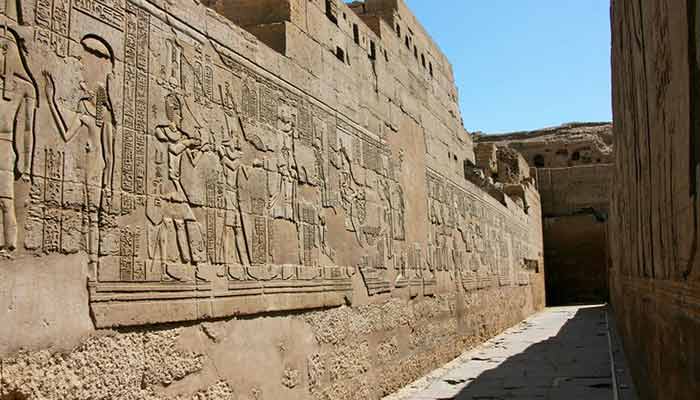
You can access the Inner Passageway of the Kom Ombo Temple by returning to the Vestibule. At the far end are seven tiny chambers with unfinished reliefs that represent various stages of the artist’s process as well as several partially written inscriptions.
Trajan, the Roman emperor, is shown making offerings to Egyptian gods in reliefs that line the east walls of the temple’s outer corridor.
He is pictured bowed down before two gods in the northeast corner, and a set of medical supplies are displayed next to the scene.
The discovery was made by a collaborative Egyptian-Austrian archaeological mission discovering the Kom Ombo Temple in Aswan. the discovery of an administrative centre from the First Transitional Period, which lasted from 2180 to 2050 B.C., raising doubts about when the temple was first built. The find is “important and unique in the region, as it reflects the value of the town of Kom Ombo throughout the First Transitional Period, which enjoyed significant agricultural and commercial activity and was occupied by a large number of inhabitants.”
Temple of Kom Ombo, according to its description on the website of the Egyptian Ministry of Antiquities, was built during the reign of King Ptolemy VI, and construction and inscriptions work continued into the reign of King Ptolemy XII, with some improvements made during the Roman era.
An Egyptian team discovered the upper portion of a limestone panel in October 2018, this suggests that Temple of Kom Ombo was built during the liberation period in 1550 B.C., when Pharaonic King Ahmose I, the founder of the 18th Dynasty, drove the Hyksos from Egypt.
Later in January 2021, the Egyptian-Austrian mission discovered seals belonging to Fifth Dynasty rulers, including those of Userkaf (2494–2487 B.C.) and Neferirkare (2475–2455 B.C.). This highlighted the significant role Kom Ombo played in the ancient kingdom as the administrative hub of Upper Egypt.
This suggests that the temple of Kom Ombo is even older than we previously thought, which drives us to look for Dynastic-era archaeological tombs nearby.
Despite these finds, the region is still unexplored, and more than 60% of its antiquities have yet to be discovered. The old town of Kom Ombo is still being uncovered.
Monuments from antiquity surround the Kom Ombo Temple
The Birth House & Crocodile Museum
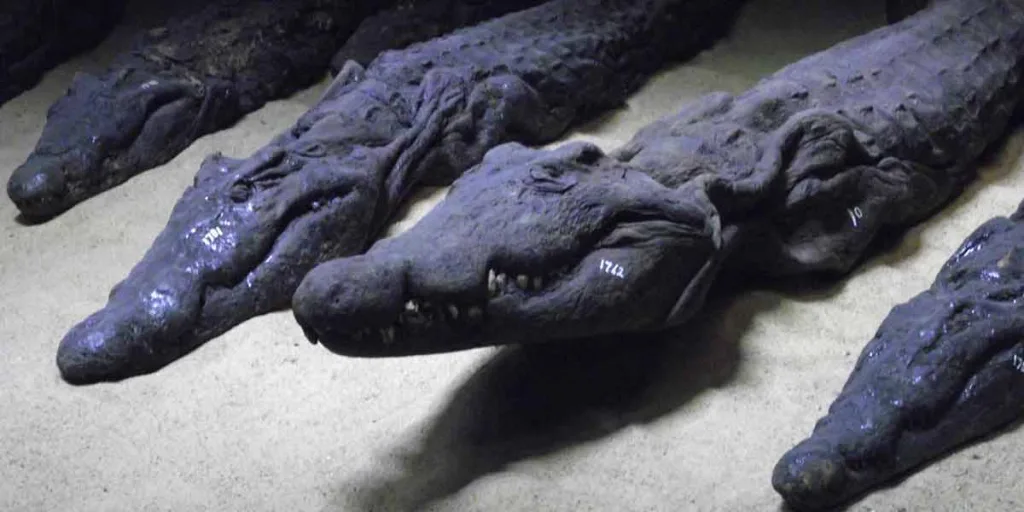
A modest, severely damaged birth house (mammisi), constructed or renovated by Euergetes II, is located on the terrace in front of Kom Ombo Temple.
Two substantial and attractive blocks from an architrave, one of which has the name of Neos Dionysos, are located in the open area to the east of the birthhouse and to the north of the temple.
Along with the ruins of other smaller buildings, you can also view a Roman entryway and a demolished chapel that is perched on a platform here. Additionally, there are two wells in this area that lead to a tiny pool that may have once housed baby sacred crocodiles.
The Kom Ombo Crocodile Museum, which houses a collection of mummified crocodiles, is only a short stroll away from here.
Temple of Hathor
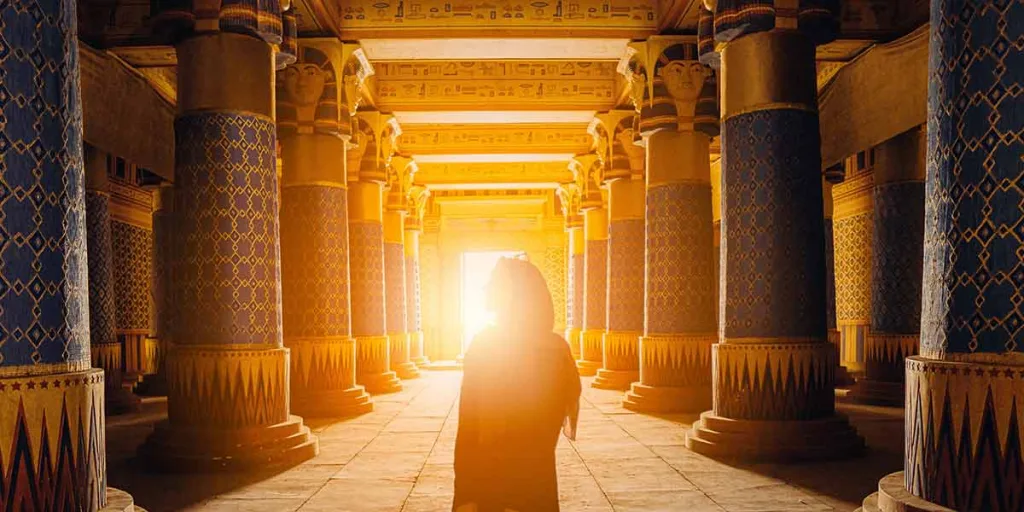
A minor red sandstone temple honouring Hathor is located to the south of Kom Ombo Temple .
Gebel Silsila Quarries, East Bank
The sizable Silsila Quarries, which were mostly used during the New Kingdom, are located on the east bank of the Nile.
Around 3,000 people were employed here during Ramses II’s reign to mine stone alone for the Ramesseum.
The sparse remnants of the ancient settlement of Khenit and its temple can be seen at the northern end of Gebel Silsila.
The Stela of Amenophis IV, which lies high up on the north side of the rock to the east, records that he ordered an obelisk to be mined here for Karnak’s Temple of the Sun. Prehistoric rock engravings can be seen to the right, further down, and a number of small rock-cut tombs can be found at the base of the hill.
Rock Temples of Gebel Silsila, West Bank
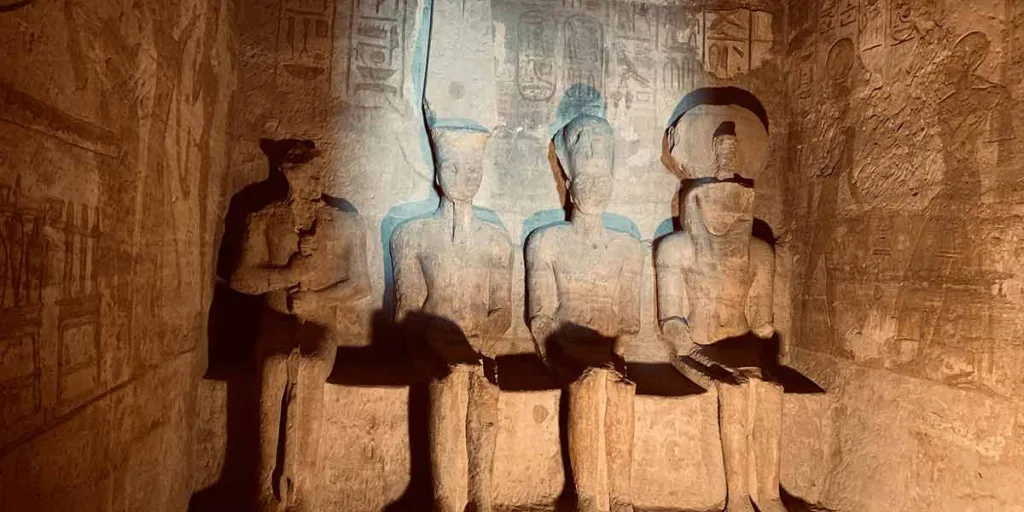
A well-traveled path leads along the Nile, past tomb niches, memorial inscriptions, and quarries to a Rock Temple that was constructed during the rule of Horemheb (18th Dynasty) and later embellished with reliefs and inscriptions, some of which are of exceptional artistic quality and significant historical value.
A torus and cavetto cornice tops the front, which has five doors separated by pillars of varied widths.
A winged solar disc and the names of Horemheb are inscribed on the lintel of the chapel’s central entry, which is currently its lone entrance.
Inside, there is a large, shallow vaulted hall with a smaller, rear-facing oblong room. There are reliefs and inscriptions on every wall.
Maximise Your Visit at Kom Ombo Temple
The Temple of Kom Ombo is usually the first stop after leaving Aswan if you are touring Egypt by Nile River cruise. Trains that go between Aswan and Luxor (and onward to Cairo) stop at Kom Ombo, although they frequently run late. If you can negotiate a fair price for a car and driver to wait for you while you explore the temple, renting a car with a driver from Aswan is the most flexible alternative.
The simplest alternative is to reserve a guided day tour or Nile cruise, many of which combine additional significant temples and monuments, so that you don’t have to worry about getting between the many locations or attempting to find your language speaking guide. Allover Egypt Tours is one of the best choices in visiting Egypt and exploring all the archeological sites of ancient Egypt.
Inquire Your Kom Ombo Tour Package
If you face any problem Send Your Inquiry Directly to :

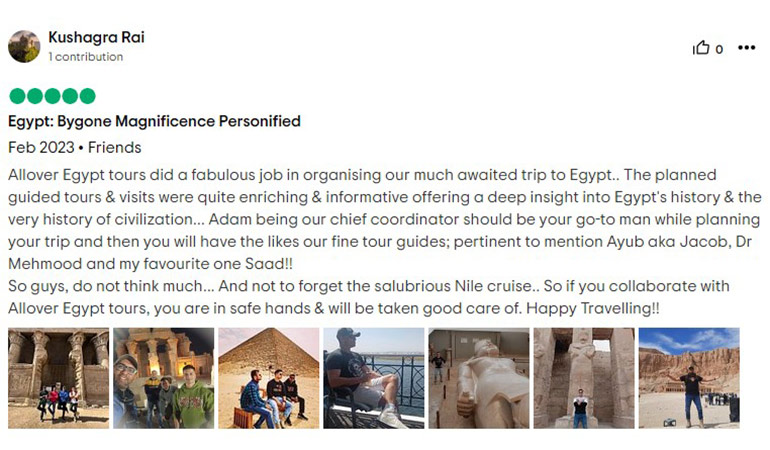
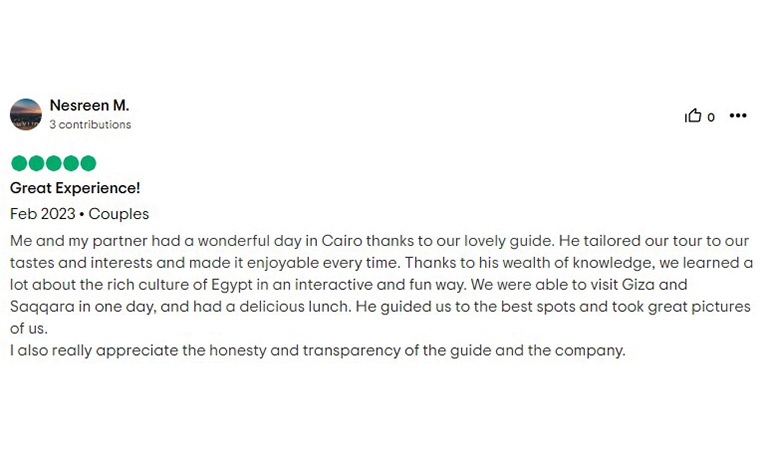
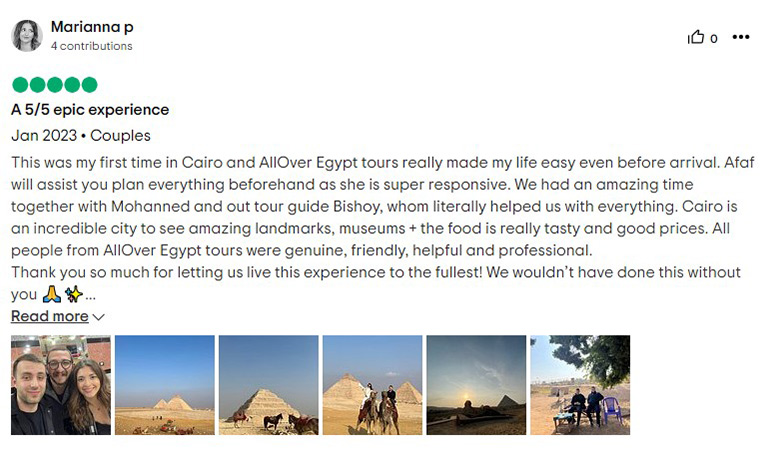
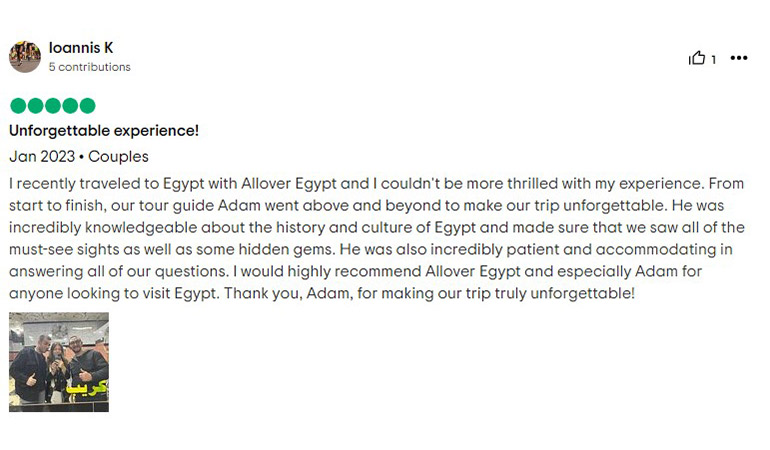

Fantastic site Lots of helpful information here I am sending it to some friends ans additionally sharing in delicious And of course thanks for your effort
Hi i think that i saw you visited my web site thus i came to Return the favore I am attempting to find things to improve my web siteI suppose its ok to use some of your ideas